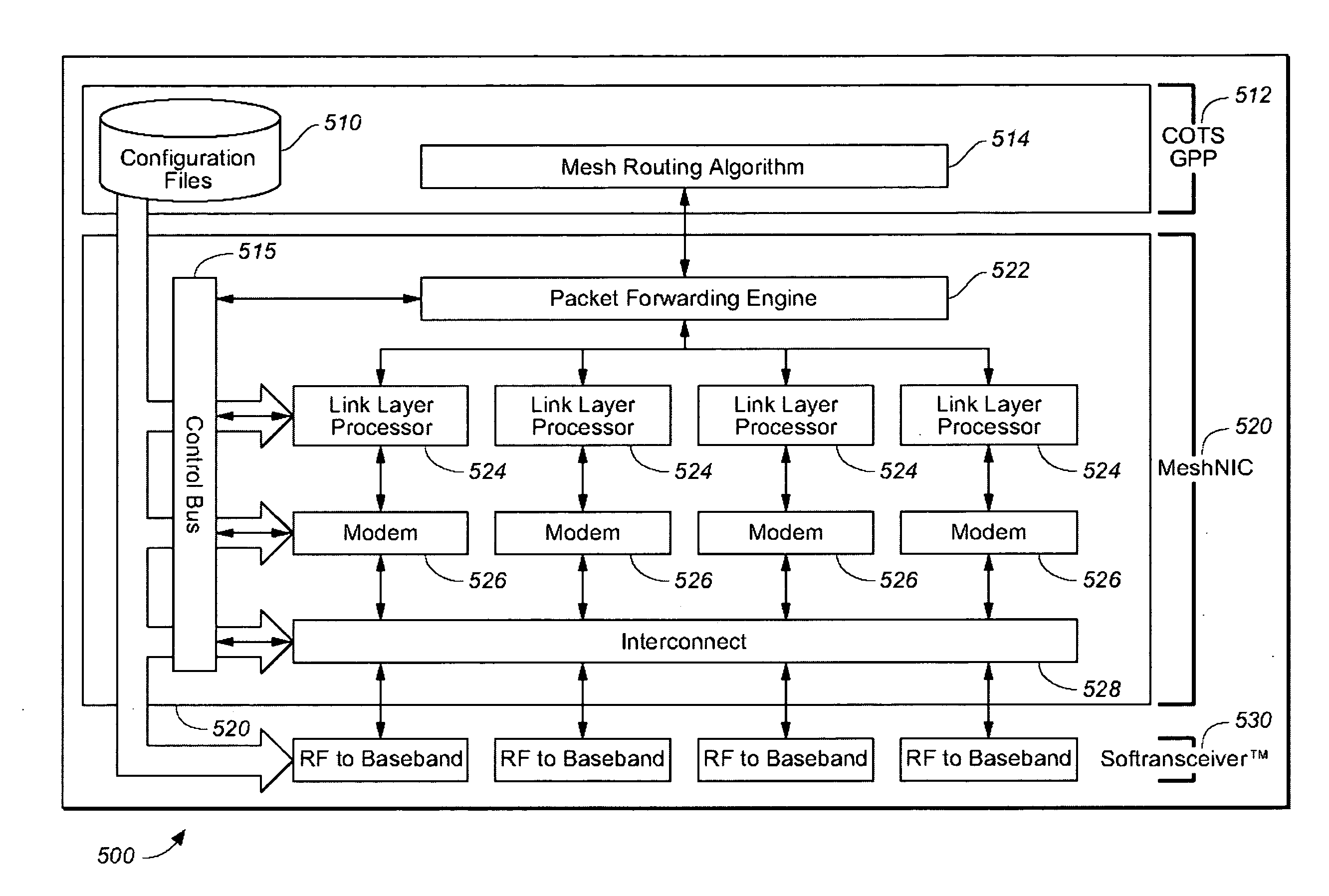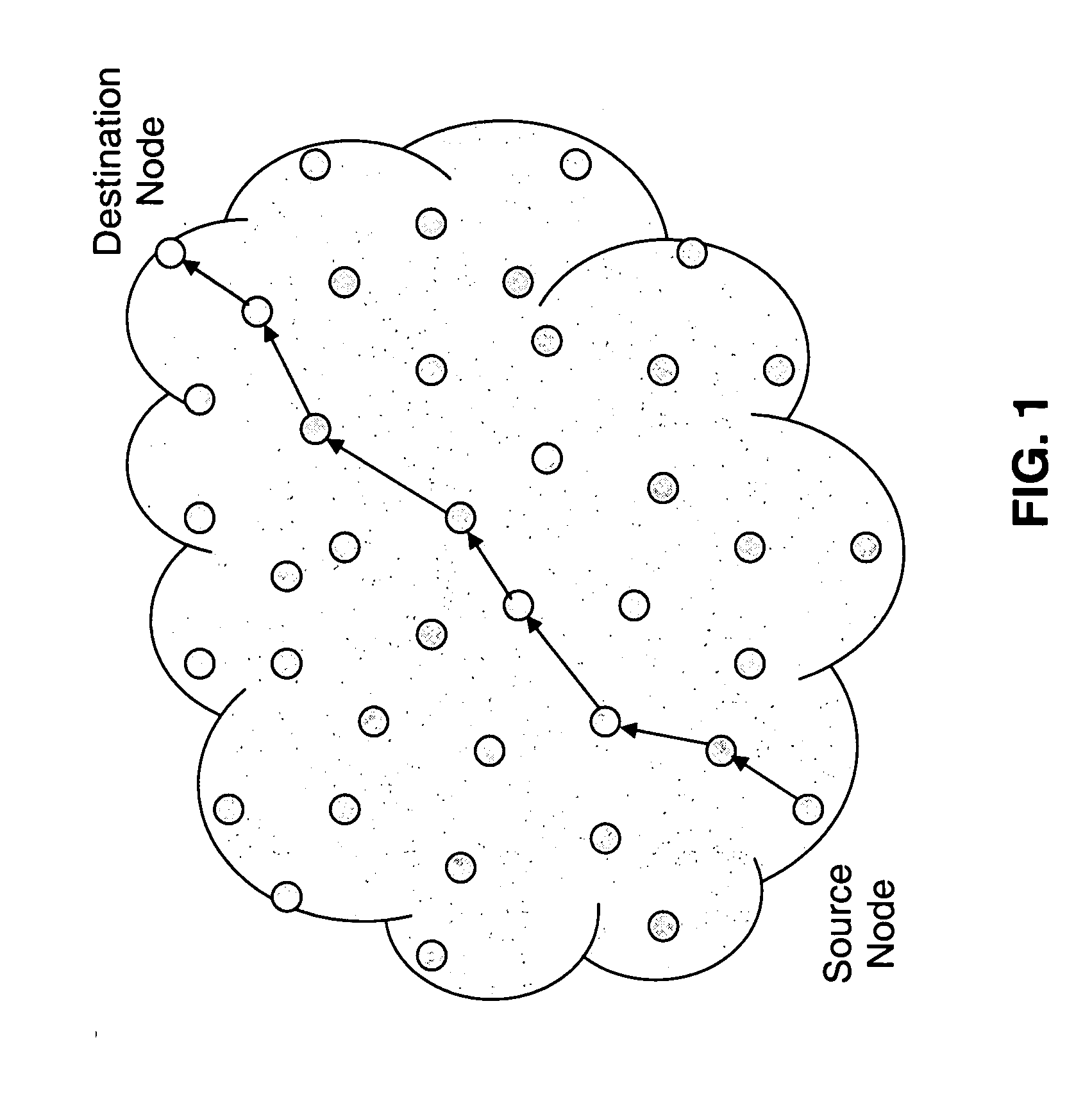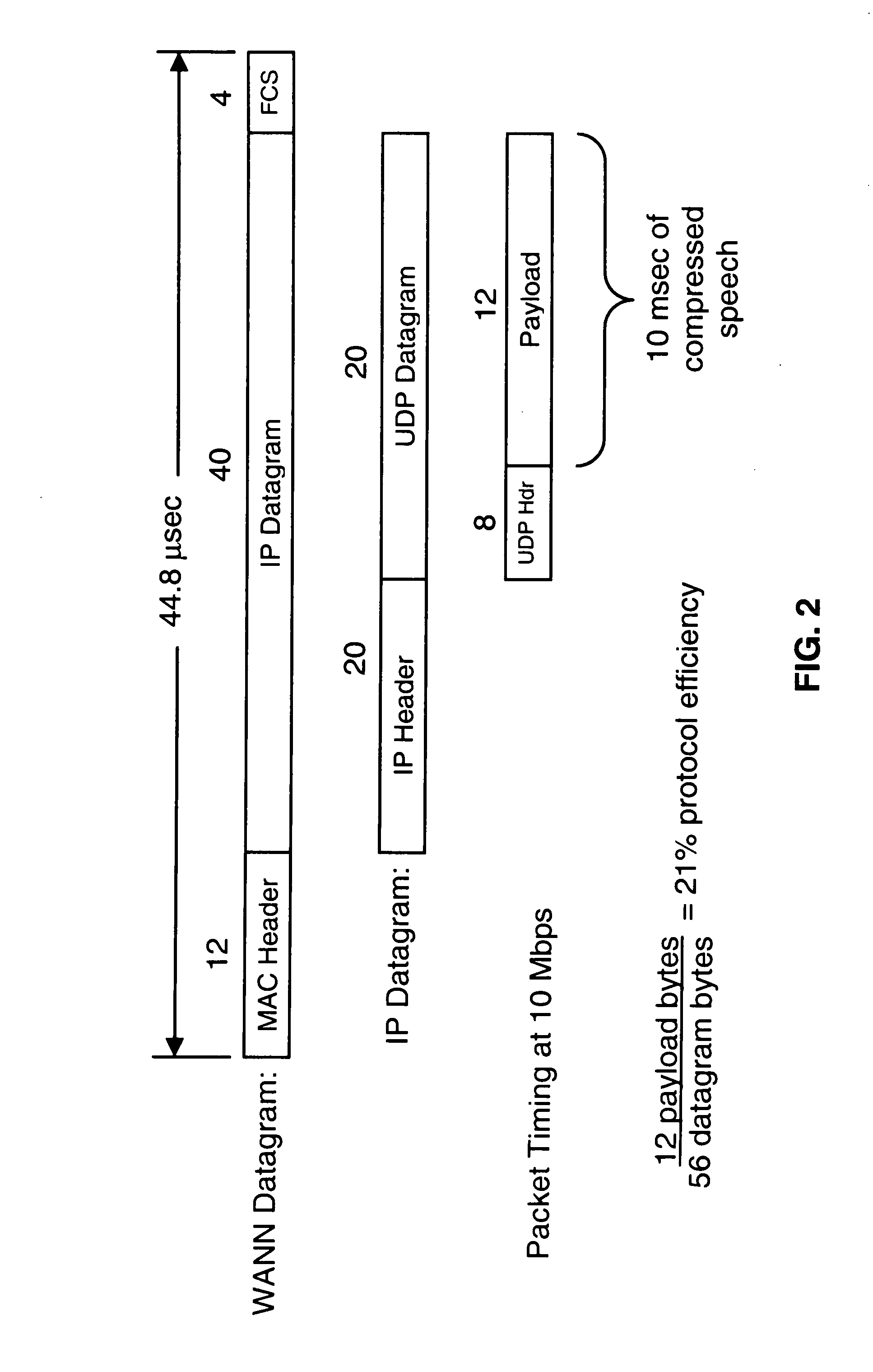Mobile nodal based communication system, method and apparatus
a nodal network and communication system technology, applied in data switching networks, high-level techniques, wireless commuication services, etc., can solve the problems of low power consumption of the mesh network infrastructure, observed packet forwarding delays of up to 25 ms, and achieve sufficient speed for effective routing, reduce the accumulation of data latency, and reduce the effect of power consumption
- Summary
- Abstract
- Description
- Claims
- Application Information
AI Technical Summary
Benefits of technology
Problems solved by technology
Method used
Image
Examples
Embodiment Construction
[0051]FIG. 1 is a schematic of a mesh network topology in a SDR nodal network in accordance with an embodiment of the present invention. These elements include a plurality of nodes, each node acting as a transmitter and receiver, in a packet switching network forming a MANet, with the nodes following a communications protocol such as the OSI (ISO) or IEEE model, such as IEEE 802.11 or equivalent. In exemplary embodiments, the communications protocol is represented as an abstract model, which has a number of layers. The abstract model of the communications protocol includes a physical layer for converting data between a signal transmitted across the nodal network and a bitwise representation of the signal within the node. For example, in one specific embodiment, in which the nodal network implements the OSI communications protocol, the physical layer corresponds to Layer 1 of the abstract OSI seven-layer model. The abstract model of the communications protocol also includes a data li...
PUM
 Login to View More
Login to View More Abstract
Description
Claims
Application Information
 Login to View More
Login to View More - R&D
- Intellectual Property
- Life Sciences
- Materials
- Tech Scout
- Unparalleled Data Quality
- Higher Quality Content
- 60% Fewer Hallucinations
Browse by: Latest US Patents, China's latest patents, Technical Efficacy Thesaurus, Application Domain, Technology Topic, Popular Technical Reports.
© 2025 PatSnap. All rights reserved.Legal|Privacy policy|Modern Slavery Act Transparency Statement|Sitemap|About US| Contact US: help@patsnap.com



